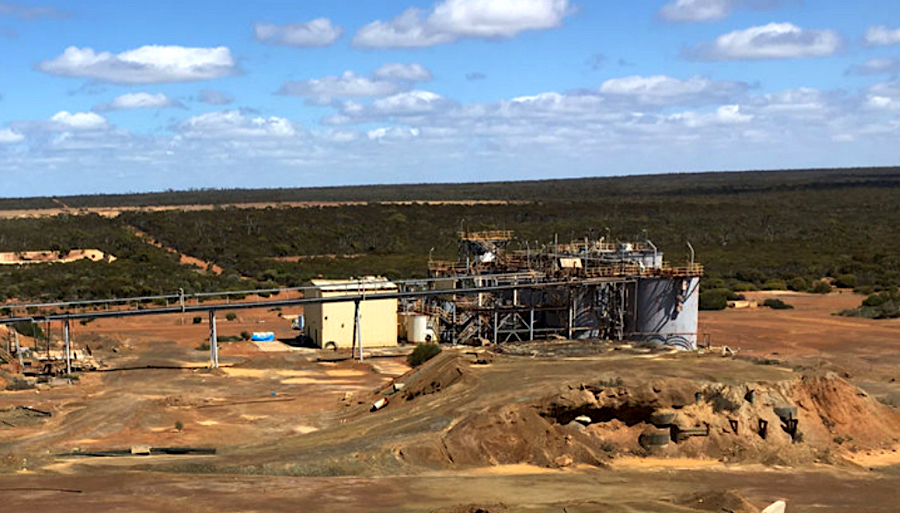New lives for old mines: A method for developing renewable energy at closed mine sites
Working in partnership with multinational mining company BHP, Rocky Mountain Institute’s Sunshine for Mines team has uncovered an opportunity to turn closed mine sites, or legacy mines, into independent power plants, storage facilities, or value-added grid-service providers, presenting the opportunity for a second useful life through renewable energy development. Innovative renewable energy and storage applications can establish new and alternative revenue streams for sites that are no longer active mines. The Sunshine for Mines (SFM) program has developed a dynamic, turnkey methodology for evaluating the greatest-value assets for redevelopment in a portfolio of sites, highlighting optimal locations and technologies, and working collaboratively to develop innovative solutions. This methodology is presented in RMI’s recently published insight brief A Second Life for Legacy Mining Sites.
Traditionally, once revenue-generating assets are no longer profitable, they become liabilities because mine operators retain long-term responsibility for their maintenance. Productive uses on legacy mines are limited due to contamination from previous mining activities. Lack of awareness surrounding the possibilities of renewables and storage development on legacy mine sites may lead to the belief that renewables are not profitable in the long run. The reality, though, is that innovative renewable energy and storage solutions can establish a sustainable revenue stream, transforming legacy sites from liabilities into assets.
Determining Site Potential
The SFM team of experts conducts a multifaceted site analysis to assess the complete renewable energy potential for each legacy mine site within a portfolio. The analysis consists of evaluating environmental, permitting, and regulatory considerations; energy production; net present value; and innovative alternatives designed to maximize value for the mine owner. Conditions of legacy mine sites may require various types of remediation, and are frequently subject to local, state, or federal regulations regarding land use and environmental impact. Using these regulations, SFM creates an exhaustive environmental, permitting, and regulatory scorecard, and then suggests innovative construction to reduce impacts on resources. Each site is screened for solar, wind, and alternative resources involving site characterization, resource mapping, and preliminary performance and levelized cost of energy (LCOE) calculations. The sites identified as having high renewable energy resources are then evaluated with regard to their reserves.
After this extensive site analysis, SFM undertakes the last step, a financial analysis, by calculating the net present value (NPV) of a renewable energy generation scenario. NPV is calculated from synthesized estimates of capital cost, operating cost, LCOE, social and environmental economic impacts, transmission costs, wheeling costs (if necessary), and market offtake value. The SFM team also fosters conversations about integrative site prioritization, value capture, and creative financing, and then makes these developments attractive to investors, developers, and mining companies.
As with all renewable energy projects, developing renewable energy solutions for a legacy mine requires a high capital expenditure at the beginning of the project and part of the way through maintenance, after which the operating expenditure is very low compared with that of any other form of electricity generation. Revenue from electricity sales can take different forms depending on the contractual arrangements. SFM’s analysis accounts for all location-specific commercial options, including the best theoretical offtake option. Additionally, SFM appraises various innovative storage opportunities that add value through load balancing or production in saturated energy markets.
Solar Plus Storage for BHP
While working with BHP, a leader in the decarbonization of the mining sector, on several of its legacy sites, SFM identified a cumulative potential of over 0.5 GW of solar photovoltaic (PV) and wind energy capacity. The team explored several different renewable energy technologies and storage applications. The team suggested solar PV with a few storage applications for most locations because of site topography, geography, and resource mapping. The team then ranked opportunities based on their overall value to help promote action on the most attractive opportunities.
The SFM methodology for developing renewable energy resources on legacy mine sites is a comprehensive, tailor-made approach to repurposing inactive mines into facilities that will reduce the carbon intensity of the grid they will connect to and transforming costly sites into sites that can again generate shareholder value.
Download A Second Life for Legacy Mine brief here.
More News
Indian delegation to visit Chile seeking stake in SQM’s lithium projects
Several companies are in talks with SQM for stakes of 20% in its Mount Holland and Andover projects in Australia.
April 04, 2025 | 09:50 am
Glencore seeks Australian government bailout for local copper assets
The company has approached both Queensland and federal governments about the future of its Mount Isa copper smelter and Townville copper refinery.
April 04, 2025 | 09:32 am
{{ commodity.name }}
{{ post.title }}
{{ post.excerpt }}
{{ post.date }}



Comments